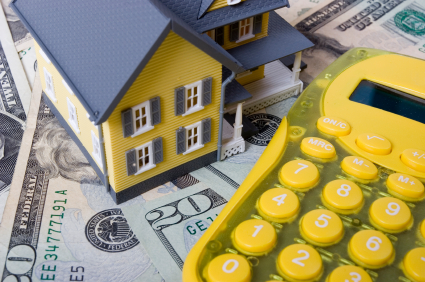Refinancing - Things to Consider
By Liz Clinger Updated on 7/24/2017
There are three primary aspects to refinancing: the interest rate, loan length, and fees. These aspects should be weighed against the existing loan and the amount of time the borrower is planning to stay in their home.
When not done properly, refinancing can turn out to be a rather expensive step backwards.
Interest Rate
The rate of interest will determine how much the loan is going to cost you. The lower an interest rate, the less money you will spend over the term of the loan.
Refinancing to obtain a lower interest rate on your loan can be tricky. The point at which the cost of refinancing and the money saved from switching to a lower interest rate break even may be years away. Determine when you will reach your break-even point to decide if refinancing will be worth the costs involved.
If you plan on staying in your home for a longer period (5 years or more), refinancing to capitalize on a lower interest rate could be a nice payoff. This will also be a good option if you need to lower your monthly payments shortly. Once you are over the hump, you could refinance into a longer-term mortgage (such as the 30-year fixed).
Depending on your tax situation, lowering your interest rate can also cost money, as you will have less interest that you can write off as a tax deduction at the end of the fiscal year.
Length of the Loan
Decide on the length of time for refinancing a mortgage that is consistent with your future financial goals. For example, a 30-year fixed rate mortgage will allow you to have lower monthly payments than a 15-year mortgage.
However, a 15-year mortgage will save you money on interest over the course of the life of the loan and it will be paid off in half the time. A 15-year fixed rate is generally the lowest refinance mortgage length available. The shorter your term, the faster you will be able to build equity.
You might be interested in an Adjustable Rate Mortgage (ARM) if you don’t plan on staying in the home for more than a few years. These mortgages come with lower initial interest rates, but the monthly payment will increase as time goes by, depending on your terms. It's helpful if you are expecting an income increase in the future but would like a lower monthly payment for the beginning part of your loan.
ARMs are available with term lengths of 15 or 30 years. If you already have an ARM, you may want to look into how you could renegotiate the caps involved with when your payments increase by refinancing.
All three loan options come with their own advantages and disadvantages, but if you carefully weigh each option against your current financial situation with your long term goals you will be able to find the refinance duration term that is right for you.
Refinancing Fees
There are fees associated with a home loan refinance and they can deplete any savings that you might have gathered from the mortgage refinance.
Depending on the lender, there are times when you can find lower flat fees, which will allow you to recover the costs sooner rather than later. Other times, lenders may choose to levy ancillary fees that further prolong the time it takes to break even.
Another fee-related aspect of refinancing to keep in mind is the cost of pre-payment penalties. If your current mortgage has any pre-payment penalties or fees, paying the loan off early could have a draining effect on your total refinance savings.
These fees are always disclosed ahead of time. One step that can save both time and money is to read the good faith estimate (GFE) before starting the refinancing process.
The lender will provide this document for you, and it will enable you to decide whether or not refinancing with them will be a good option long term.
Lenders in your area will offer different fees and rates. Shopping around can help you find the lowest mortgage interest rates available, and will also allow you to compare various loan products.
Breaking Even
Your goal is to get to the ‘break-even point’ sooner rather than later. This point occurs when the total cost of refinancing (including any fees, losses in terms of tax deductions, or pre-payment penalties) corresponds with the savings incurred by refinancing your loan.
Basically, the break-even point is when you start saving money on your loan.
To consider the loan type, the fees, and the interest rate you are willing to accept in addition to how long you are planning to stay in your home, tax reductions, pre-payment penalties, and overall cost.
Refinancing Underwater Mortgages
If you do not have enough equity in your home, in other words are underwater, you can benefit from the HARP 2.0 Refinance Program.
We have several articles on this site regarding the HARP 2 program.
In addition to HARP 2.0, FHA has a refinance option built in called the Streamline Refinance. With most lenders you can refinance with an appraisal, and limited documentation. VA financing has the Interest Rate Reduction Refinance Loan (IRRRL), where like FHA, they don't require an appraisal and limited documentation.
USDA has a pilot program which is only available in certain states and is similar to the FHA and IRRRL refinance.

Didn't find the answer you wanted? Ask one of your own.

Contributing Authors
Related Articles
Ask our community a question.
Searching Today's Rates...

Featured Lenders
Reggie Crouse
Top Flite Financial
Little Rock, AR
Jim Kenny
El Conquistador Mortgage, Inc.
Oro Valley, AZ
Justin Olson
RedRock Mortgage
West Des Moines, IA
Erik Castillo
Omega Financial Services
Union, NJ








